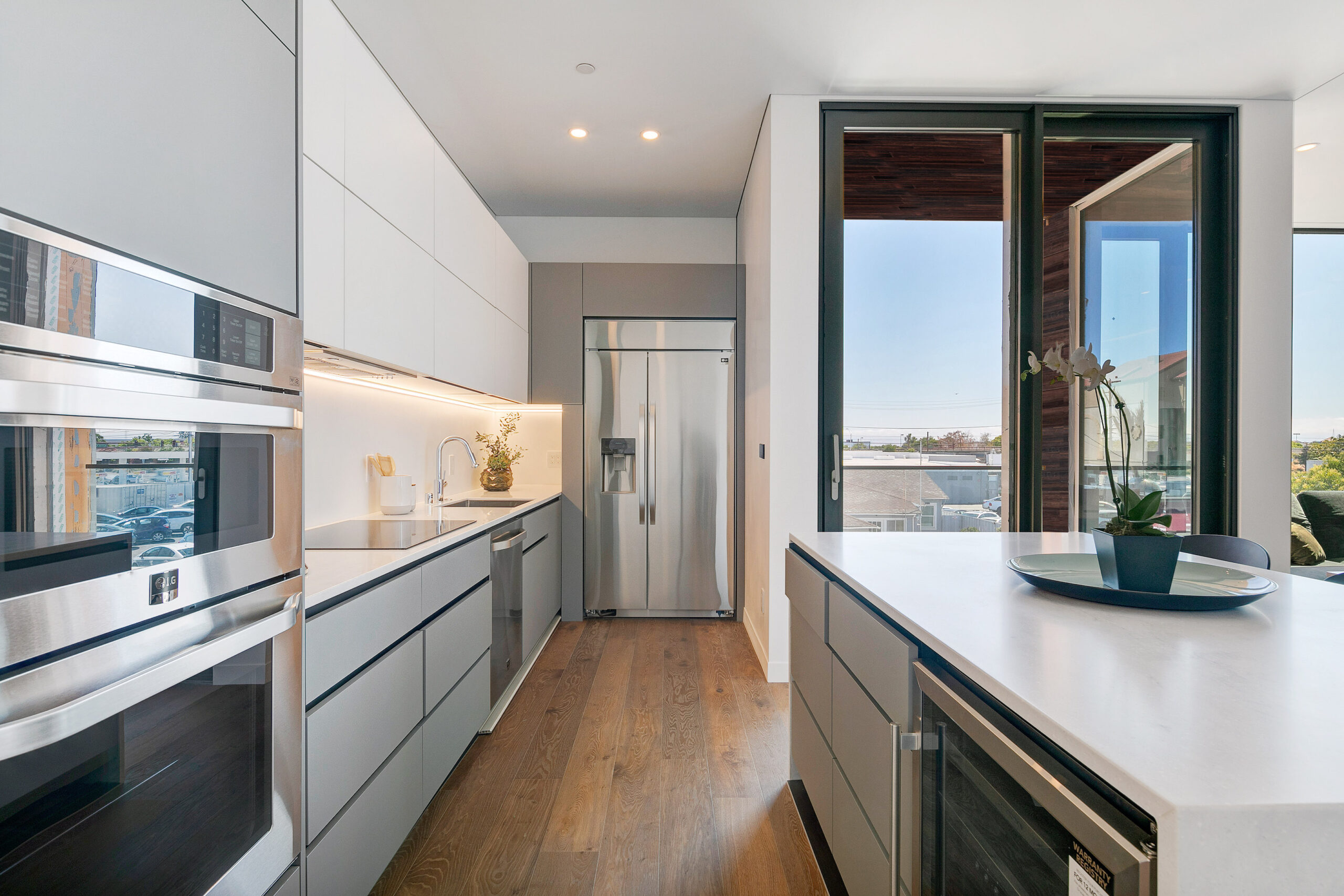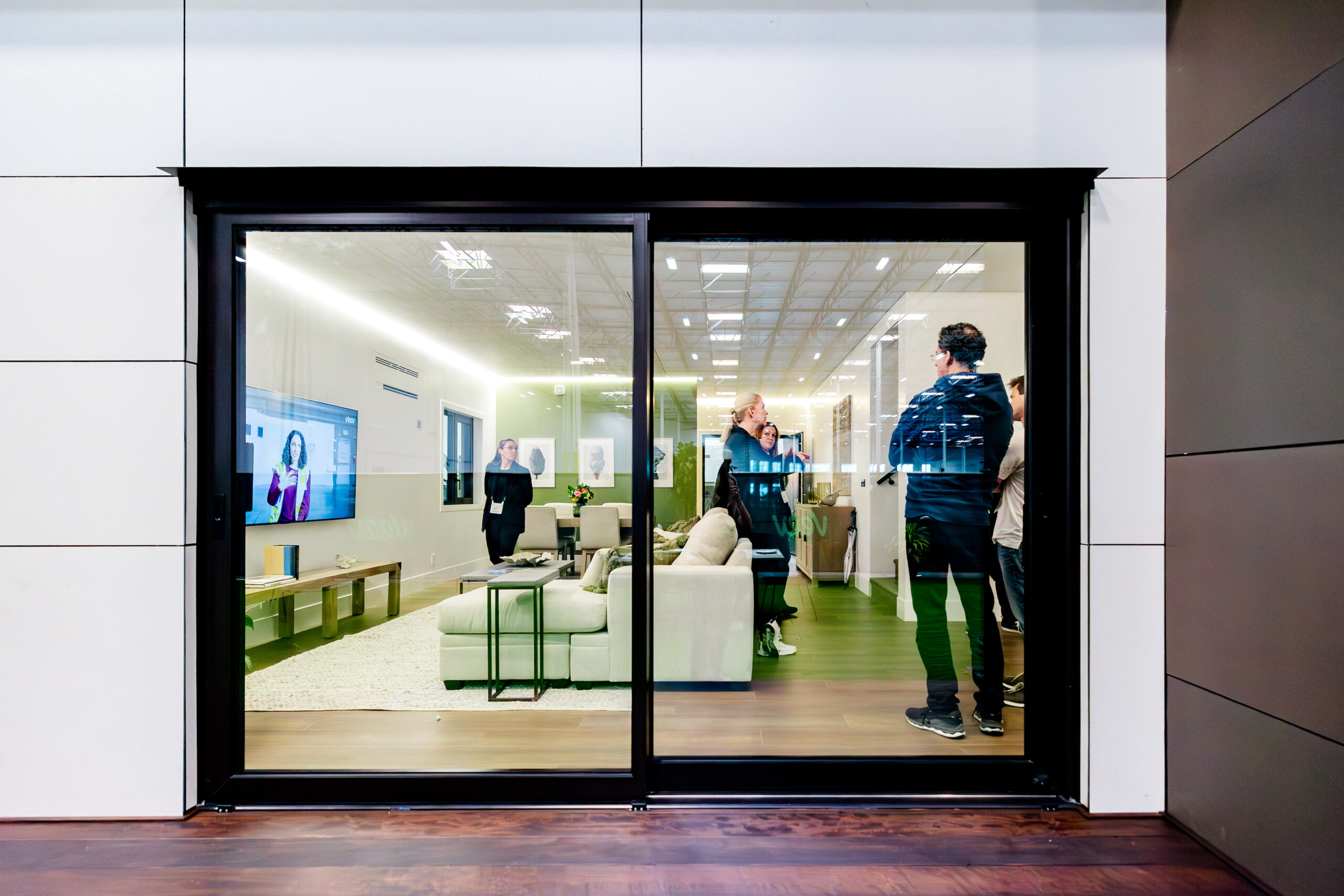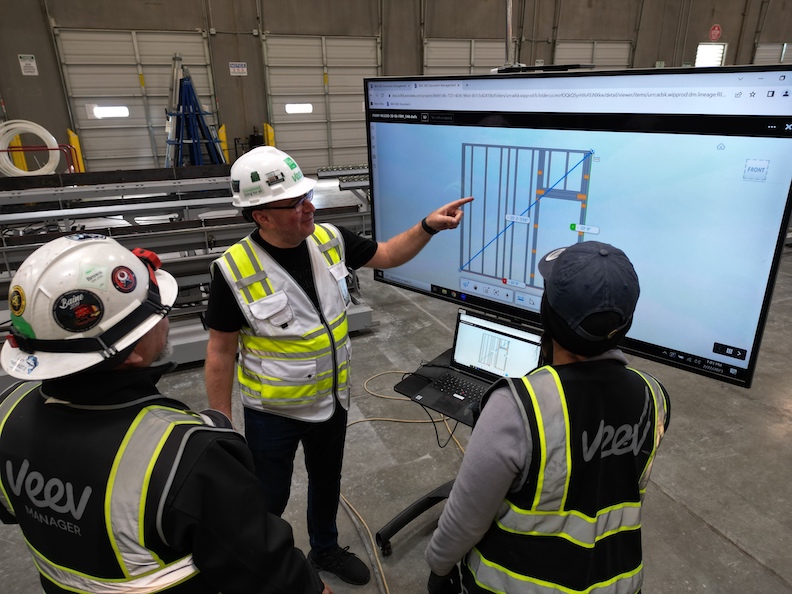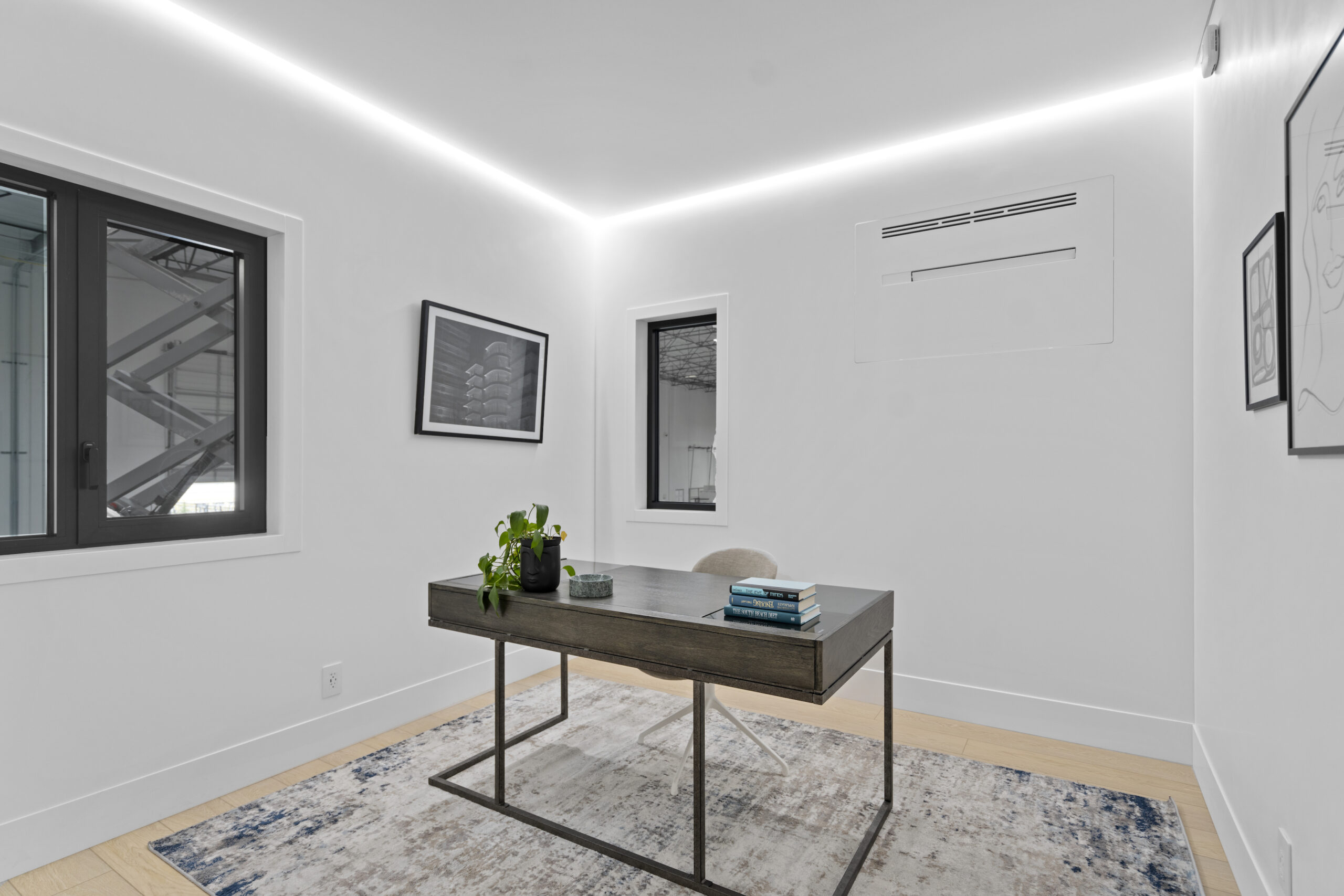
Building and running homes takes a huge toll on our environment. Residential real estate accounts for nearly 40 percent of the world’s greenhouse gas emissions. At Veev, we believe that making a meaningful impact on slowing climate change requires radically reimagining how homes interact with our planet at every stage of their lifecycle.
We founded Veev after working in traditional home building and witnessing how much inefficiency and waste the industry creates: more than 600 million tons every year in the U.S alone. That’s why, from the very beginning, we’ve integrated sustainability into our philosophy. It is the lens through which every decision is made, from the materials we source, to our method of building, to how we set homes up for solar power and a built-in digital operating system to optimize energy efficiency.
We’re not alone in our quest. More developers are prioritizing building sustainable communities both because it’s the ethical way forward, and because environmental regulations are ramping up. Consumer demand is also rising:
60 percent of homebuyers worldwide now prioritize sustainability when considering a purchase, and real estate agents estimate energy efficiency increases a home value by roughly 25 percent.
We’re working to set a new industry standard: Veev homes produce near zero-waste and roughly 50% fewer carbon emissions than a traditional build.
Here’s how we approach sustainability at all stages of a Veev home.
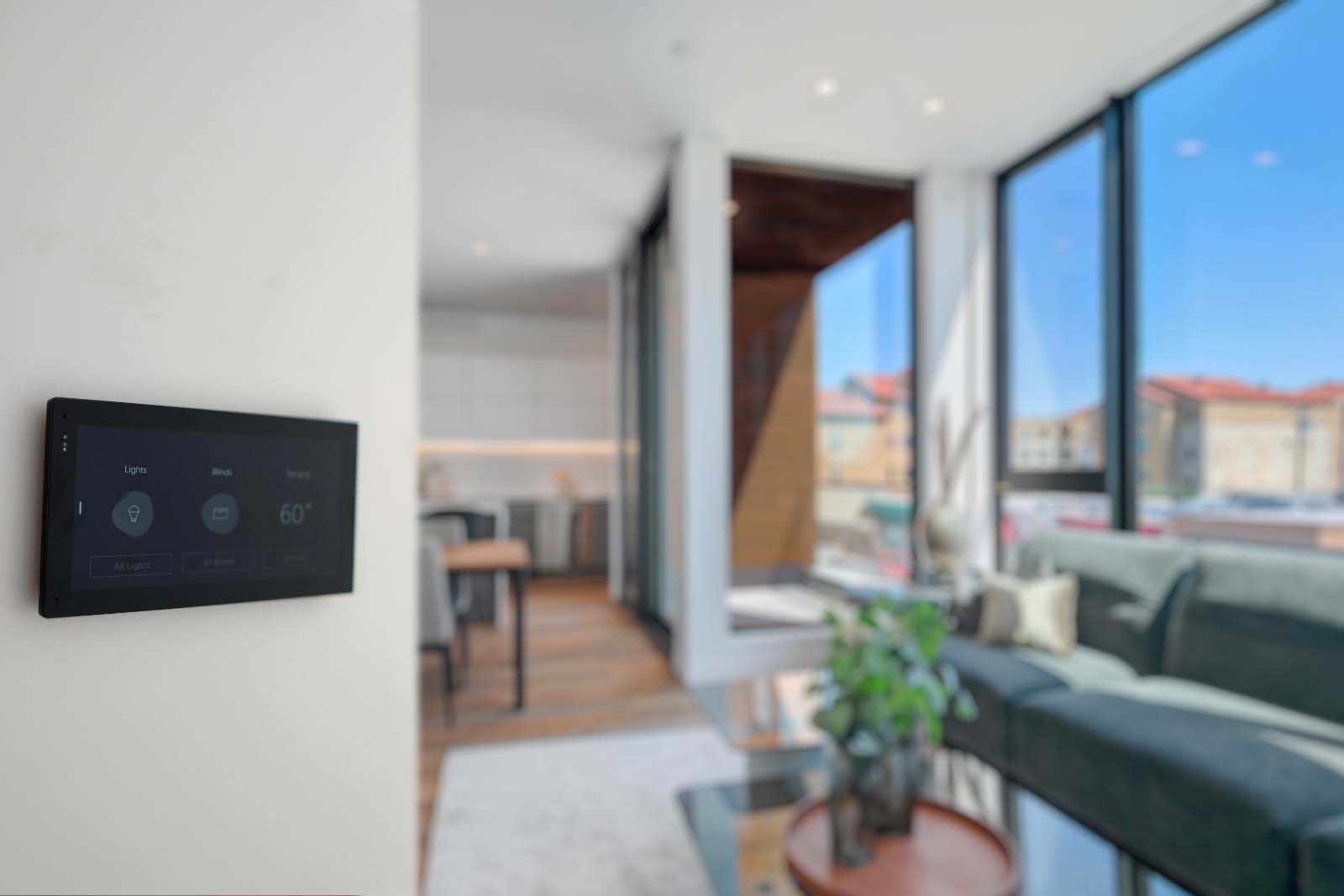
It all starts with materials
Our material selection process is rigorous.
Our team conducts a thorough life cycle analysis for every material we source, evaluating its embodied carbon levels and any certifications it has acquired. We look for materials that can be truly recycled in a cradle-to-cradle capacity (the ability to be infinitely reused without losing structural integrity.)
We use the following core materials:
Steel
Building a traditional wood-framed home results in a large amount of waste; 30 percent of wood is tossed at a build site, on average. Instead of wood, we use light-gauge, 70 percent recycled steel with a goal of achieving 90 percent recycled. Steel is a cradle-to-cradle material. It fits into our manufactured build process and results in a tiny amount of leftover materials, which are recycled and reused.
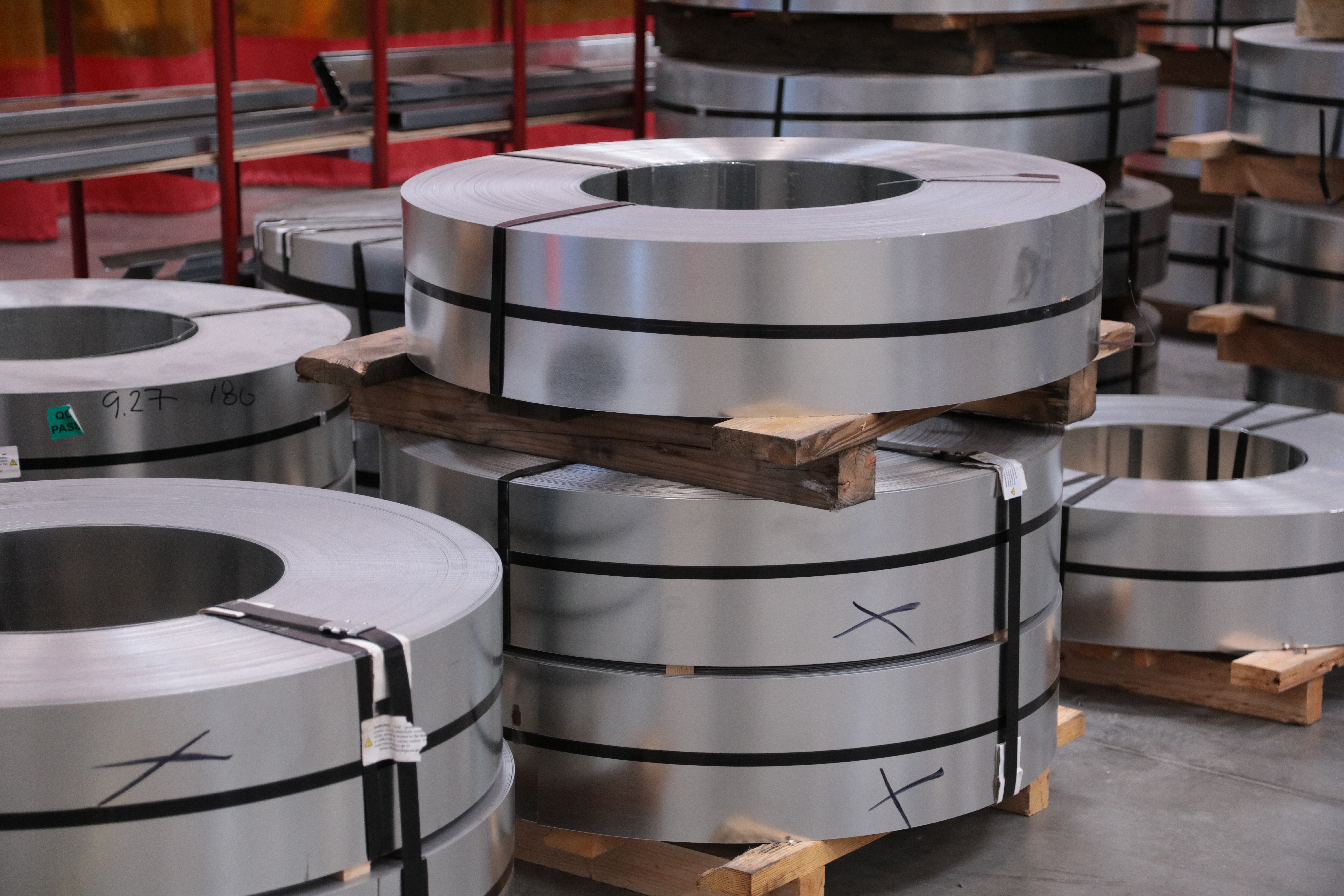
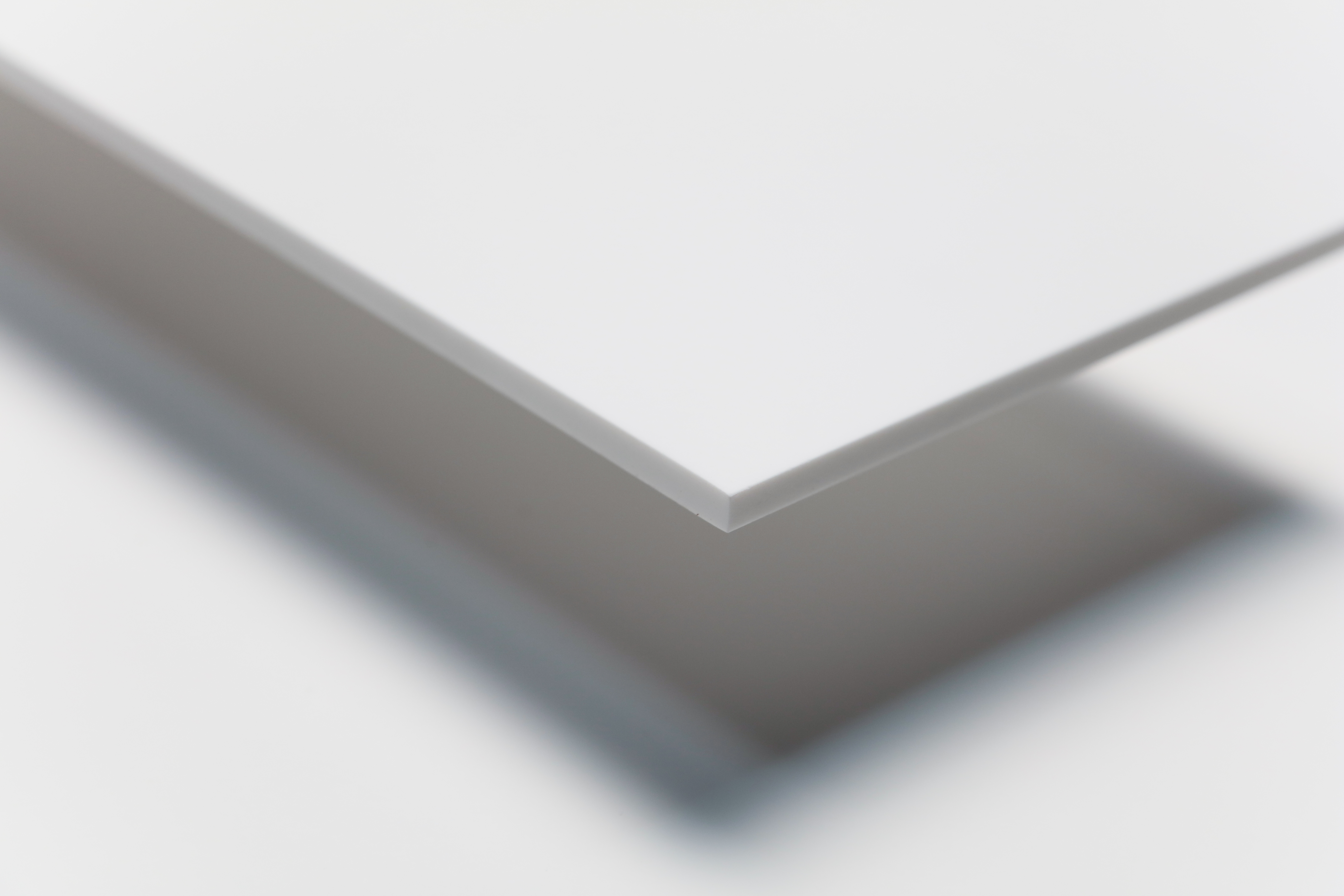
HPS
We use high-performance surface (HPS) for its many benefits, including its flexibility to be molded into walls, kitchen cabinets, built-in closets, backsplashes and more. We achieve near zero waste with HPS because we are able to easily melt down any material leftover for re-use as baseboards, doors, door jambs, handles, as well as for patches and repair.
Helical piles
Traditional home foundations involve pouring an average of four truckloads of concrete into the ground — impacting soil quality and surrounding ecosystems. Concrete is made with cement, which generates an enormous amount of CO2 emissions and water to create. Instead, we deploy helical piles, which are steel beams that drill into the ground as an anchoring system. The process uses far less material and is less disruptive to the surrounding environment.
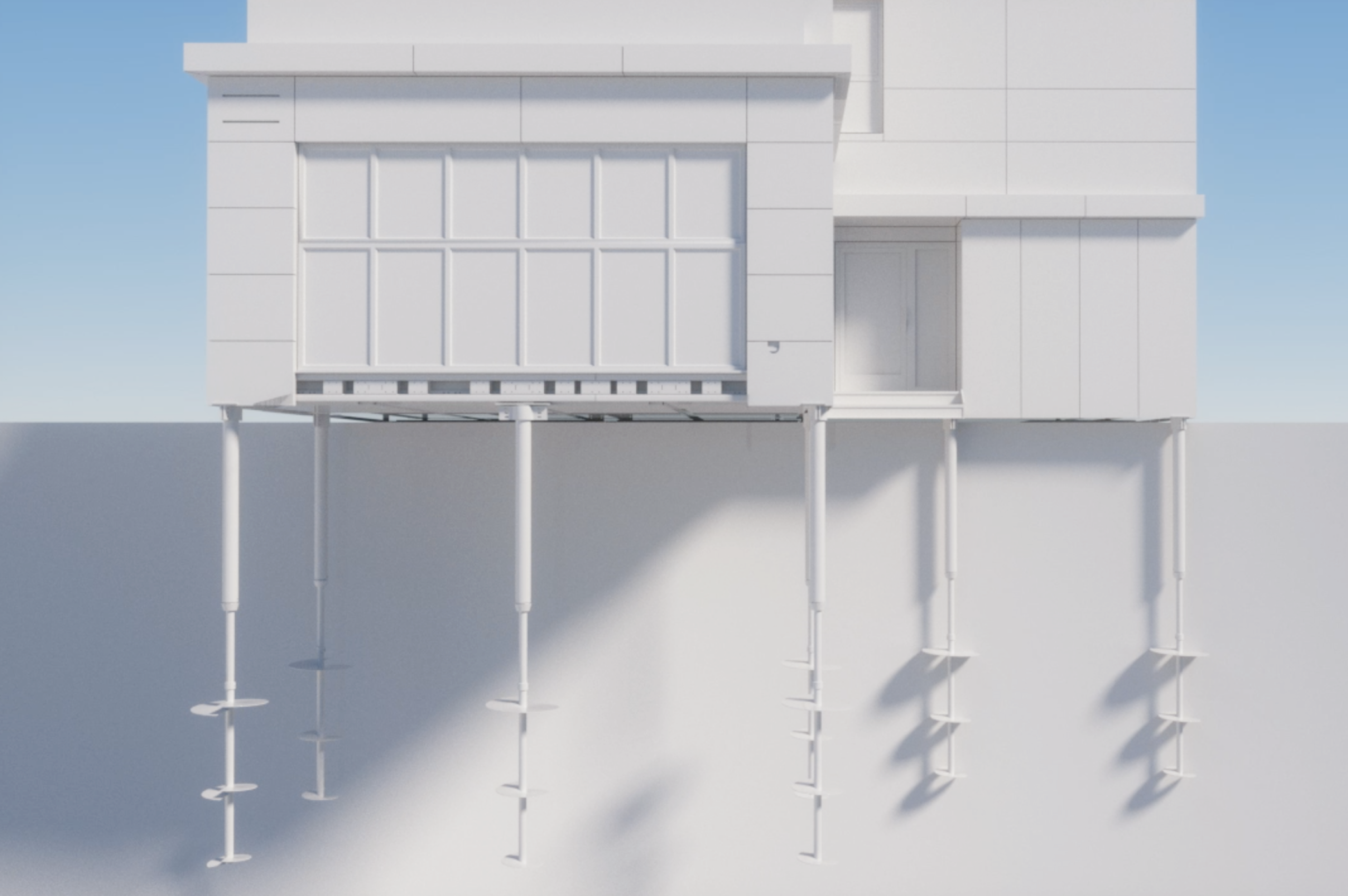
We reduce the amount of materials we use across the board.
A traditional home requires upwards of tens of thousands of line items to build. A Veev home requires close to 500. We consider material reduction one of our biggest tools in minimizing our overall impact on the planet. We do this by sourcing materials that have the flexibility to be used in multiple ways, such as steel and HPS.
We reuse or recycle any leftover materials.
For the minimal amount of material that we have leftover after a build, our first line of thinking is, “Where else could this function in the home?” For example, when we cut out a door frame, we use the material cut out to create the door itself. The same is true for the HPS cutouts we use for electrical outlets, we use the remaining materials as light sconces.
If we can’t reuse any HPS material in the current build, we melt it down for the next project.
We continuously evaluate our materials.
We conduct surveys of every material supplier to collect baseline sustainability data, including embodied carbon, for every single-sourced material — down to the screws we use. This annual process helps us fill gaps where data isn’t collected throughout the industry, and it allows us to be accountable for every piece of our product, then share our progress transparently with our customers. By conducting this analysis ourselves, we’re able to track our impact in detail.
Our team reviews the collected data and encourages ways for suppliers to become closer to cradle-to-cradle. We’re also always on the lookout for sustainable material options we may not have considered yet.
Precise building technology slashes waste
Nearly everything we buy today, from our cars to our phones, is built in a manufacturing setting — for good reason. A controlled environment results in a consistent, high-quality product that can be measured and tracked.
Our team has more than 35 patents pending for our proprietary building technology. The heart of our technology is our closed wall system, in which we fully assemble every wall panel — with electrical, plumbing and mechanical components — at our digital fabrication facility before delivering them ready to connect into place onsite.
The process is vertically integrated, precisely mapped from start to finish. It begins with a detailed design developed in our digital twin software. The specifications are then translated directly into our digital fabrication facility machinery, providing precise step-by-step instruction to create our panelized walls, eliminating human error and unnecessary waste.
Houses powered by solar and the Veev Digital Home
America’s housing is aging: 65 percent of homes were built before 1989. Aging homes tend to run inefficiently, with poor insulation, old windows, years of wear and outdated construction standards.
We are building homes to operate at the highest efficiency standards. Every Veev home can be powered by built-in solar; we even look to position our homes for optimal sun intake
Our solar panels generate more energy than required to fuel a home, not only eliminating electricity bills but also allowing homeowners to store excess energy as backup.
This is becoming more appealing given issues with power grids not being able to keep up with demand, as well as the need to charge electric vehicles.
Our homes come with a built-in operating system, the Veev Digital Home, which controls everything from lighting to climate control to ensure optimal efficiency. Every build also comes with low-voltage wiring, low-energy appliances, and induction stoves over gas, which can be three times more energy efficient than gas cooktops.
Setting a new industry standard
The homes of the future must do better for our planet than the homes of the past. Government regulations are becoming more strict every year. At the same time, employees, shareholders, and buyers expect environmental improvements.
At Veev, sustainability is not an afterthought. From our materials to our building technology to the way we set up homes to operate efficiently, it is built into our mindset. We know that there are always ways to improve, and we are constantly iterating our sustainability standards. Our team is dedicated to improving with each new version of the Veev Home.
